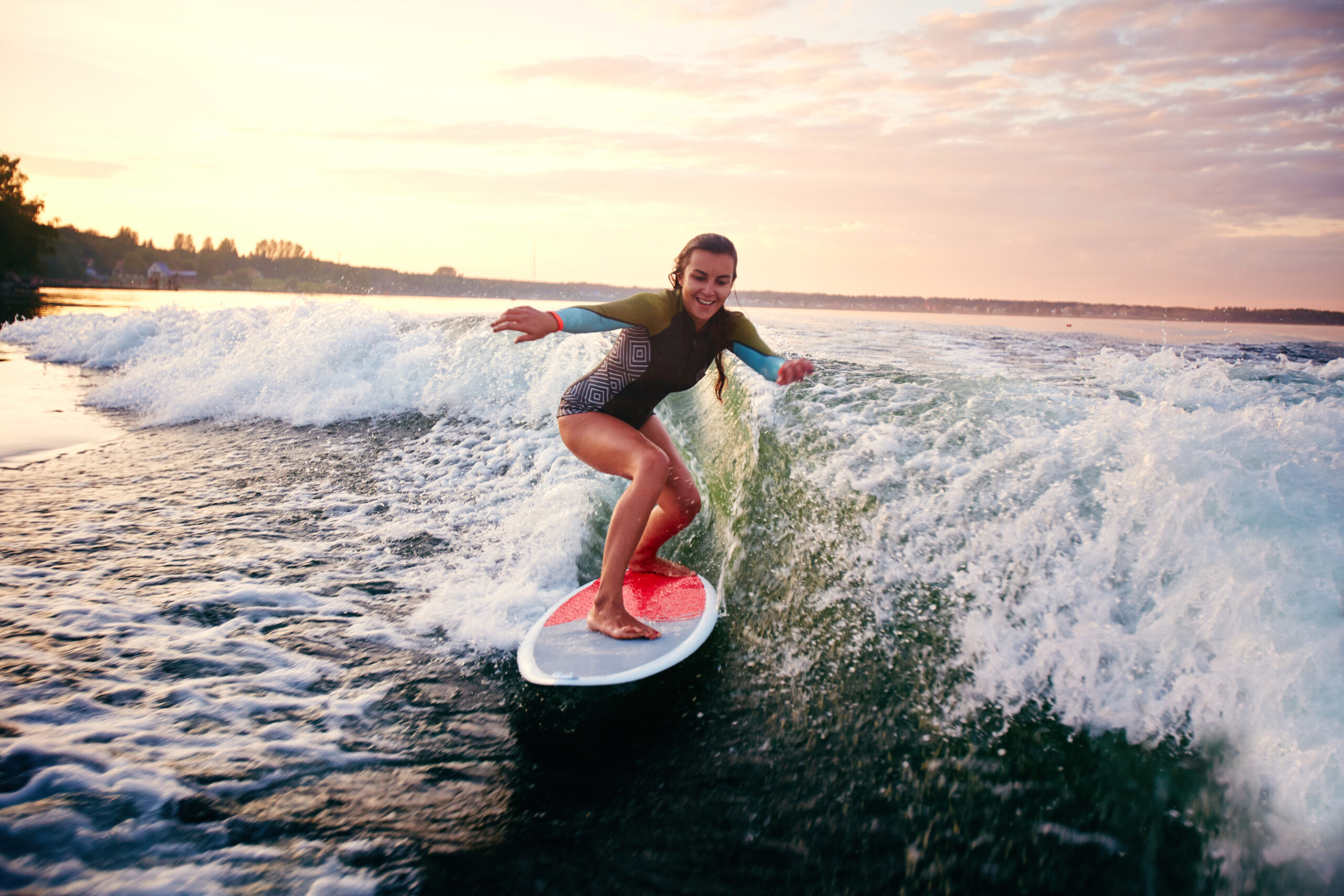Longboard surfing harkens back to the roots of the sport, with its focus on graceful riding styles and nose riding techniques. While shortboards dominate many lineups today, longboards still have a dedicated following drawn to their elegance and tradition. Mastering classic longboarding requires dedication to improve balance and footwork. With practice, patience, and persistence, the joys of gliding across waves and walking to the nose can be attained.
Choosing the Right Longboard
The first step in developing longboard surfing skills is selecting the appropriate equipment. While longboards range from 8 to 12 feet, a 9 to 10 foot board is ideal for beginners. The extra length and width provides more paddling speed and stability. Funboards offer a hybrid option, with the float of a longboard but the maneuverability of a shortboard. When selecting a classic longboard, a rounded nose shape and single fin setup helps with noseriding. The ideal dimensions and design depends on the rider’s size, wave conditions, and personal preferences. Consulting experienced longboard shapers and surfers helps narrow the choices. Properly selecting materials is also key – traditional wood boards provide an authentic experience, but fiberglass and epoxy boards are lower maintenance. With some research and trial-and-error, the right board can be found. This provides a solid foundation, making the learning process easier and more enjoyable.
| Board Length | Skill Level |
|---|---|
| 8-9 feet | Advanced |
| 9-10 feet | Beginner to Intermediate |
| 10-12 feet | Pure Beginner |
Proper longboard selection provides a solid foundation. But perseverance through the learning curve is required to ride with true style.
Developing Balance and Footwork
The most fundamental longboard surfing skill is balance. Unlike shortboards, standing on a longboard requires fluid footwork and small adjustments. Practice first lying prone and popping up to a wide stance. Focus on keeping shoulders square and centered. As comfort increases, bring feet closer together towards the middle of the board. Maintain equal weight on both feet by making micro adjustments. Look ahead to the shore, not down at the feet. Practice correct posture on land to ingrain muscle memory. Yoga helps develop the core strength and alignment needed for balancing on a longboard.
Trying to learn good balance in large waves is difficult for beginners. Start in smaller 1-3 foot waves to grasp the basics. Once able to pop up and ride straight confidently, gradually work up to more challenging surf.Ideal conditions for progressing are clean, gentle waves of head high or smaller. Larger waves teach advanced techniques, but can be frustrating early on. Learning balance is about consistency and incremental improvements over many sessions.
Footwork while riding is also key. Make slight adjustments to evenly distribute weight as the board moves. Don’t over-correct with large movements. Bend knees and stay low to keep centered. Smoothly walk the board to stay in the best place to catch waves. For turning, use the rails instead of leaning hard. Finesse trumps force when longboard surfing. With an attentive core and adaptive footwork, poise and grace will follow.
Patience and small adjustments lead to fluid footwork and balance. Mastering these technical elements allows longboarding to become artistry.
Walking the Nose and Noseriding
The pinnacle of classic longboarding is nose riding. Walking to the front of the board demonstrates skill, but also allows an intimate connection with the wave. Start by kneeling and managing balance before progressing to standing. Position back foot in the sweet spot, then slowly walk up keeping weight centered. Once near the nose, step front foot up and straighten back leg. Arms outstretch for balance. Look ahead, not down. Ride the curl as long as possible before stepping back.
Trying to learn noseriding in large or hollow waves is extremely challenging. Opt for smaller 2-4 foot peeling waves when starting out. Bigger waves give less room for error. Focus on cruising waves and holding the nose for 10-20 feet at first. Once this feels comfortable, start setting goals for longer nose rides. Record sessions to review and refine technique. Noseriding is a lifelong journey of small milestones.
Noseriding takes conditioning, coordination, and calf strength. Don’t get discouraged. Small increments of progress compound. Exchange tips with experienced longboarders. Vary wave choice to hone skills. With dedicated practice, moments of noseriding glory await.
To conclude, longboard surfing represents a graceful, traditional style often overlooked today. But learning proper technique unlocks the dance-like artform. Balancing on a longboard requires fluid footwork. Noseriding epitomizes skill. While a challenging discipline, small improvements in balance and positioning stack over time. Patience, persistence, and quality board selection allow beginners to embrace this classic form. Longboarding’s joys emerge through mastering the foundational skills. With mindful progression from standing to walking the nose, this retro style offers rewards through a lifetime.
